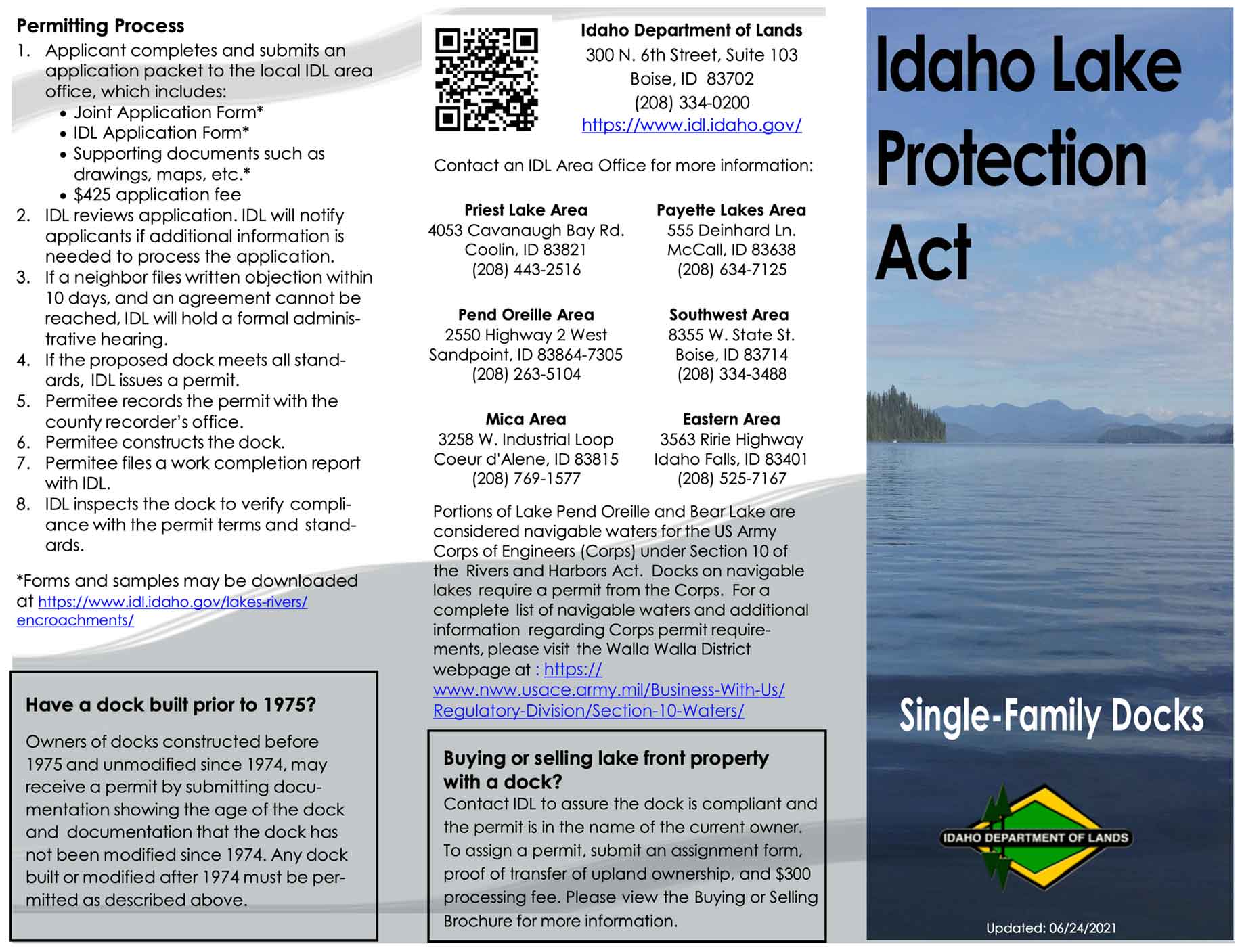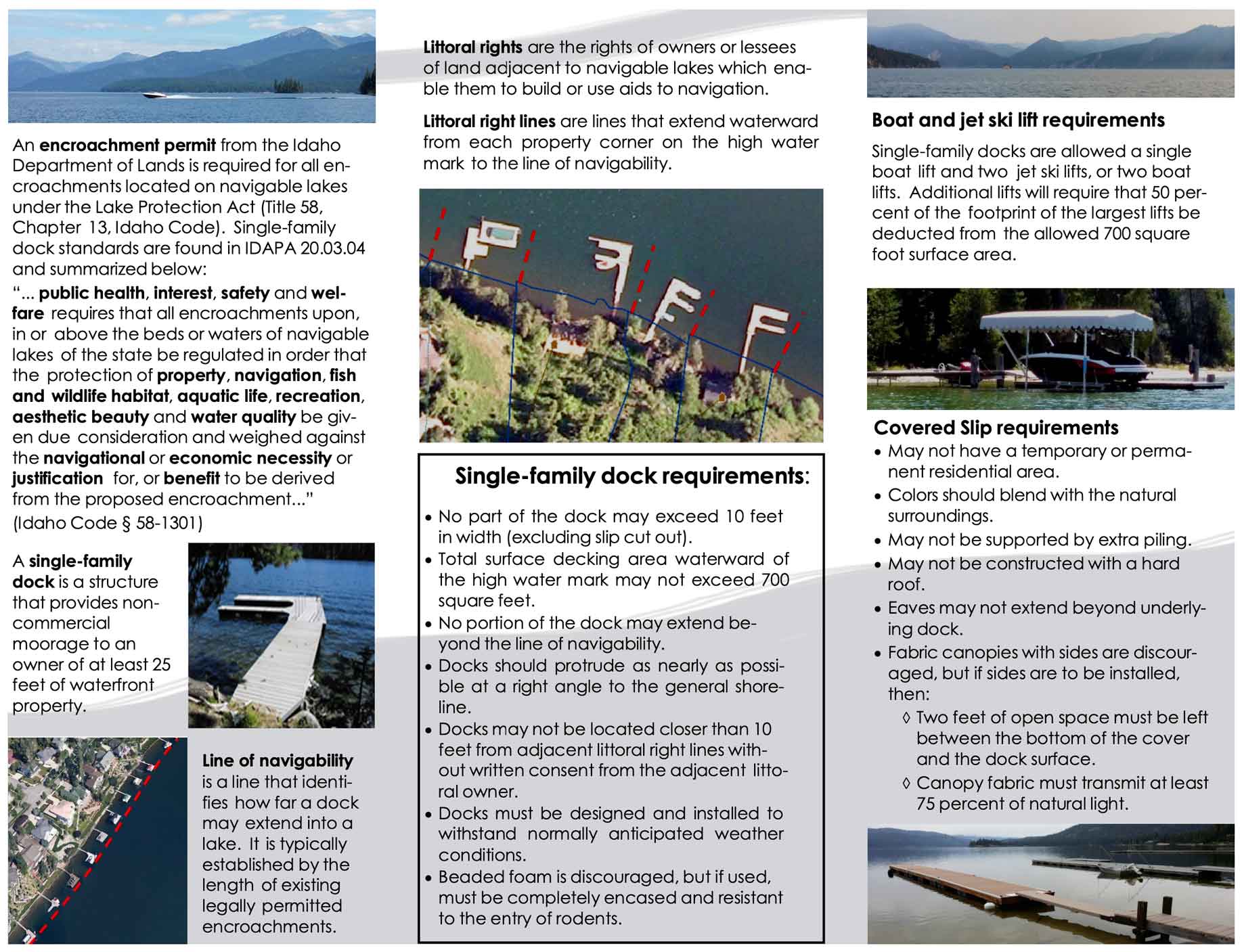Resources
Lake Information
Kootenai County Boating Rules
Below are the boating rules for Kootenai County code title 6 chapter 2 in which are in effect since spring of 2021.
Basic Rules
It shall be unlawful for any person to operate any type of vessel or watercraft on the public waters within Kootenai County, Idaho in a negligent manner.
IDAHO law requires that any operator of a vessel involved in an accident or collision, report the accident or collision to the Sheriff’s Department immediately; provided that property damage exceeds $1500.00 or there is death or personal injury or persons missing.
Children age fourteen and under must wear an approved life jacket when they are aboard a vessel 19 feet long or less when the vessel is underway or under power. This applies to manually propelled boats as well as motorboats.
Personal Watercraft, canoes, kayaks, and inflatables are subject to boating laws and ordinances.
Upper Twin Lakes
Speed limits for all public waterways except the Coeur d’Alene and Spokane Rivers, and Lower Twin Lakes are as follows:
- NO EXCESSIVE WAKE ZONE, within (300’) three hundred feet of shoreline or any dock, pier, breakwater, or any person in the water (except Fernan Lake).
- 5 MPH, a NO WAKE ZONE, within (200’) two hundred feet of shoreline or any dock, pier, breakwater, or any person in the water.
- 50 MPH during daylight hours
- 15 MPH, or less, within (100’) one hundred feet of any other vessel.
- 25 MPH, or less, at night unless otherwise restricted.
Lower Twin Lakes
Speed limits for Coeur d’Alene River, the Spokane River, and Lower Twin Lakes are as follows:
- NO EXCESSIVE WAKE ZONE, within (150’) onehundred fifty feet of shoreline or any dock, pier, breakwater, or any person in the water (includes Fernan Lake).
- 5 MPH, NO WAKE ZONE, within one hundred feet (100’) of shoreline, dock, pier, breakwater, or person in the water, and
- 35 MPH, or less, during the day, unless regulated otherwise.
- 15MPH within 50’ of another vessel
- 25 MPH, or less, at night.
NO WATERSKIING/TUBING ON THE CDA RIVER
Idaho Lake Protection Act: Single Family Docks
Click on the images to enlarge and read:
Kootenai County Emergencies
How will you find out about local emergencies? ALERT Kootenai system management by Kootenai County 911.
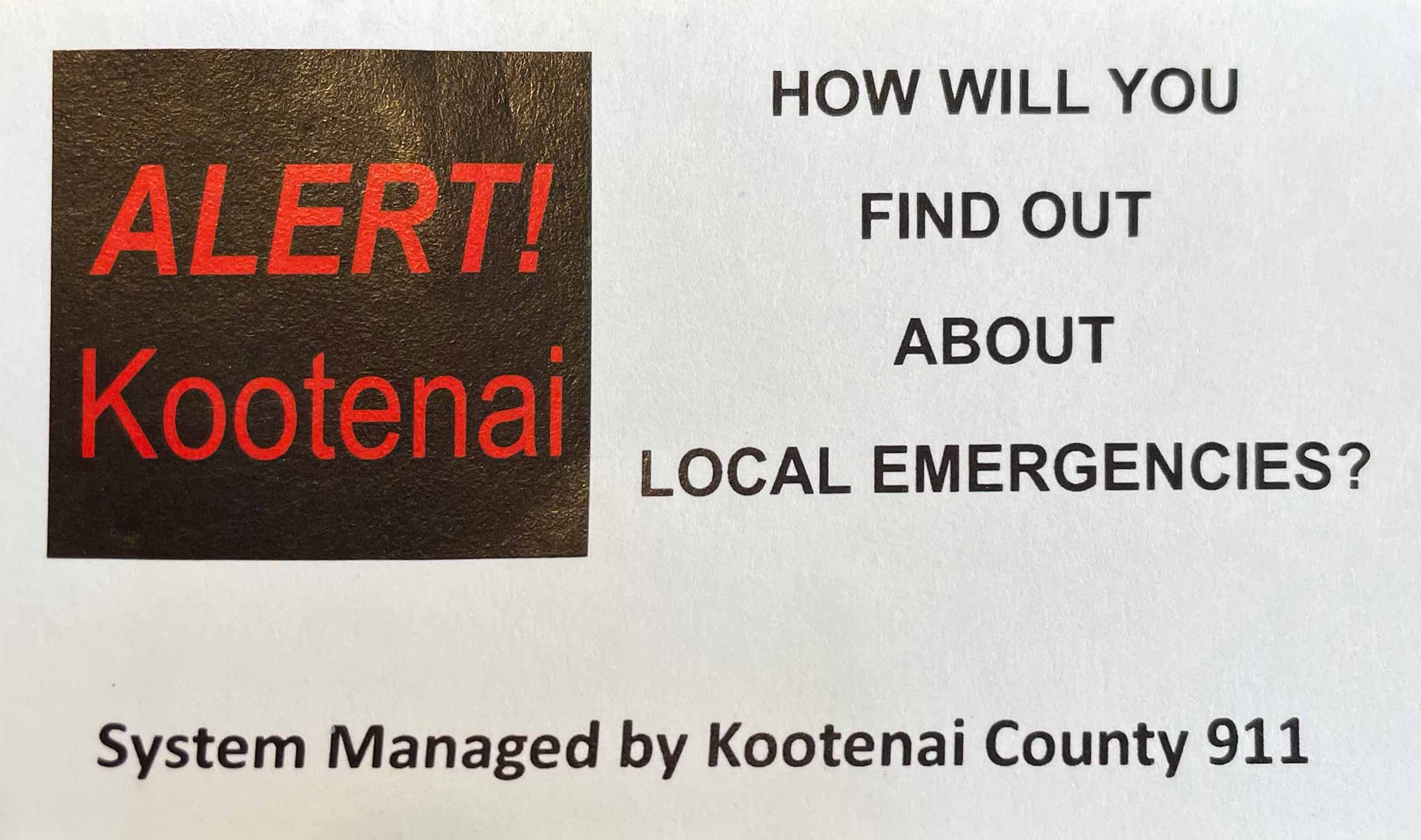
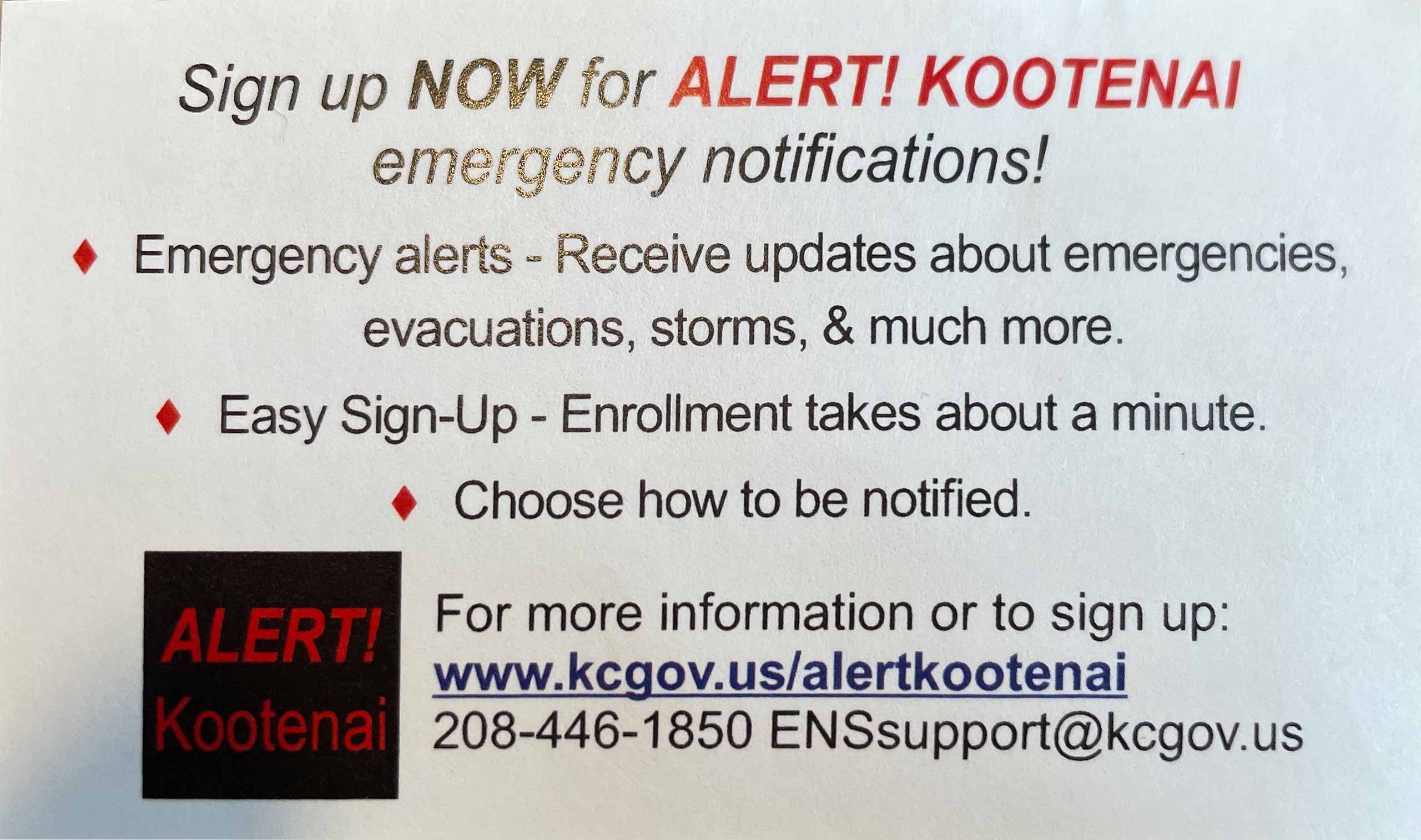
Save Our Lake!
What YOU can do to preserve the water quality of TWIN LAKES. While there is never an easy answer or quick fix to protect our lake, there are a number of simple things that we can do AND promote with our lake neighbors. Understanding how our actions affect the long term health of our lake helps current and future generations protect the lifestyle and value of our lake and environment. Limiting phosphorus entering the lake is the key to controlling the growth of algae, excessive aquatic plants and improving water clarity, oxygen content and water quality in general. Consider placing a copy at your cabins and homes on the lakes.
Lake Do’s and Don’ts
Do’s include:
- Use zero-phosphorus lawn fertilizer
- Properly operate and maintain septic systems; pump at least every three years for year-round residents, or 5 years for seasonal residents
- Use phosphorous-free dishwasher & laundry detergents
- Clean up pet waste
- Keep bonfires away from the lake, and clean up all ashes
- Pick up fireworks debris and residue
- Ensure your boat engine and gas tank have no fluid leaks. (Consider using a small hand pump or other devices to transfer gas from containers to your boat to avoid spills.)
- Cover loose soil areas with vegetation and remedy any shoreline erosion problems
- Develop and maintain a shoreline vegetation buffer
- Remove seaweed and vegetation from around your dock and swimming area.
- Rake up of leaves and debris from shoreline in the fall, so it doesn’t end up in the lake!
- Don’t add sand along the shoreline- (Sand contains high amounts of phosphorus and destroys the natural filters we need to keep the lake healthy.)
- Don’t bathe, shampoo, or wash boats, pets, or other objects in the lake
- Do not fertilize within 30 feet of the lake (From 30 feet to 250 feet, use no phosphate, slow release nitrogen fertilizer on vegetated areas.)
- Don’t feed the ducks and geese (Resident duck and goose populations increase disease-causing bacteria in the water. They can also be a significant source of nutrients to the lake.)
- Don’t put leaves, grass clippings, branches or any kind of organic matter into the lake (Plant debris adds phosphorus and other nutrients directly to the lake.)
HABS- “Hazardous Algal Blooms”
For the current information on Northern Idaho Lakes click the button below.
Floating Things on Kootenai County Lakes
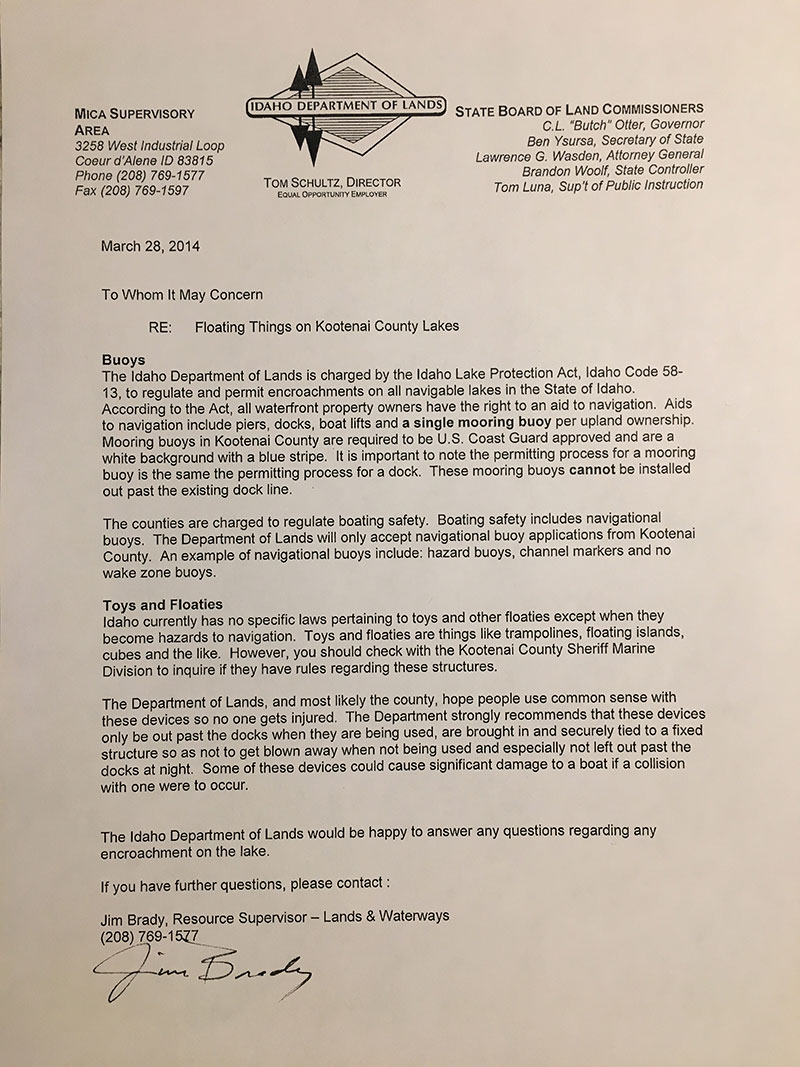
Migrating Quagga Mussels & Idaho Inspection Stations
A New population of Quagga mussels was discovered in Canyon Lake, Arizona. This is an area of water circulation, therefore, all the adjoining reservoirs potentially have them. Arizona has a limited prevention program and all boats traveling from Arizona are considered high risk for the transportation of these mussels to other lake systems.
Idaho intercepts and decontaminates more boats compared to any other Northwest state. Data for 2015 showed 25 fouled watercraft were intercepted with 17 destined for Idaho. 11 boats were out of a fouled waterbody for less than 30 days. Eighteen had been recently purchased, 14 were commercially transported and 16 gave prior arrival notification.
Incoming data for the month of May 2016 shows five fouled watercraft coming from Lake Havasu, Arizona and intercepted at the Hwy 93 station. Boat owners on Twin Lakes who take their boats to other lakes should ensure the boat gets cleaned to prevent cross-contamination between Lakes. It is also important to get all weeds off as well. Currently, Twin Lakes is free from mussels and Eurasian Milfoil. Let’s keep it that way.

